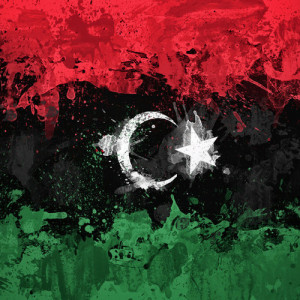
The fighting galvanised political circles and fanned the flames of the debate about the role of the ex-militant formations in Libya.
Former minister of post-war Libya’s first government Mahmoud Shammam believes that this fighting indicates that there are deep cracks in the coalition of former rebel forces who fought against the old regime.
Tripoli’s militias set a course for squeezing out first the militants who came from Misurata and then, probably, those who came from Zintan so that they could rule on their own afterwards.
Besides, revolutionaries (suvars) often act under state protection, and they are sure of their own legitimacy presenting themselves as the “revolution shield”. Former rebels’ godfathers do not wish to share the power pie with the Centre.
Since the summer of this year, a number of detachments of local militias and militants engaged in protecting oil sites in the east of the country have been blocking the production sites and ports exporting black gold. They demand higher wages, contributions from export proceeds, other concessions and are, in fact, blackmailing the authorities. As a result, oil export has dropped, and, according to Libyan Oil and Gas Minister Abdelbari al-Arusi, Libya’s treasury losses have reached 9 billion dollars.
The Libyan government has threatened to stop paying the armed groups if they fail to join the regular forces by the end of 2013.
But the Centre, which has kept the suvars on a financial leash for the last two years, is unable to rip them out from under the authority of their compatriot commanders, tribal and regional chiefs, to overcome the particularism of militias and involvement in rivalries between newly emerged political parties.
Pro-Islamic factions are particularly active. The Islamists are convinced in the priority of Sharia over state laws. They rely on the principle of their loyalty and adherence to Sharia – Islamic law – believing that it gives them the freedom of hands as opposed to the supremacy of secular laws.
In the context of the bloody events in Tripoli, UN Permanent Representative in Libya Tarek Mitri insisted the other day on the need for a dialogue with all armed factions and on the state’s monopoly on the use of force.
But it is not that simple. Today, the government and the interim parliament personify quite a heterogeneous conglomerate of forces, and it is hard for them to consolidate and, as an arbitrator, rise above their tribesmen. This year, the parliament has been repeatedly attacked by suvars from different regions of the country. In October earlier this year, Libyan Prime Minister Ali Zeidan was abducted by militants and was in their hands for several hours.
In Libya, an increasing number of voices are heard in favour of some international peace-keeping efforts in the country, including an operation for the collection and protection of the vast quantities of weapons left over after the war. The current Libyan leadership has repeatedly asked the West, the USA and NATO countries for help and technical assistance in establishing a new army, security forces and training of border guards. According to reports in the media, the United States, Great Britain, Italy, Turkey and other countries have agreed to render assistance in training 8 thousand Libyan military personnel.
In the West, there is presently no shortage of official and unofficial expression of alarm and concern about the exacerbated situation, violence and loss of innocent lives in Libya.
Meanwhile, we should not forget that not so long ago, in 2011, NATO’s air strikes made a “great contribution” to the destruction of Libya’s military structures. This has largely created vacuum in terms of security and order and, ultimately, opened the gates to a free-for-all of all sorts of militants, and all Libyans suffer from that.
Today’s Libya seems to be a state with fragile power structures, vulnerable to the challenges of turmoil and which is drifting towards uncertainty.
Former minister M. Shammam fears that the deep cracks which have plagued the coalition of militias are going to lead to a war between them “on a horizontal principle”. That war would be even more dangerous than in Somalia, because in Libya there are lots of money, weapons and militants.
Yuriy Zinin, senior researcher at the Moscow State Institute of International Relations (MGIMO), exclusively for the New Eastern Outlook online magazine.
